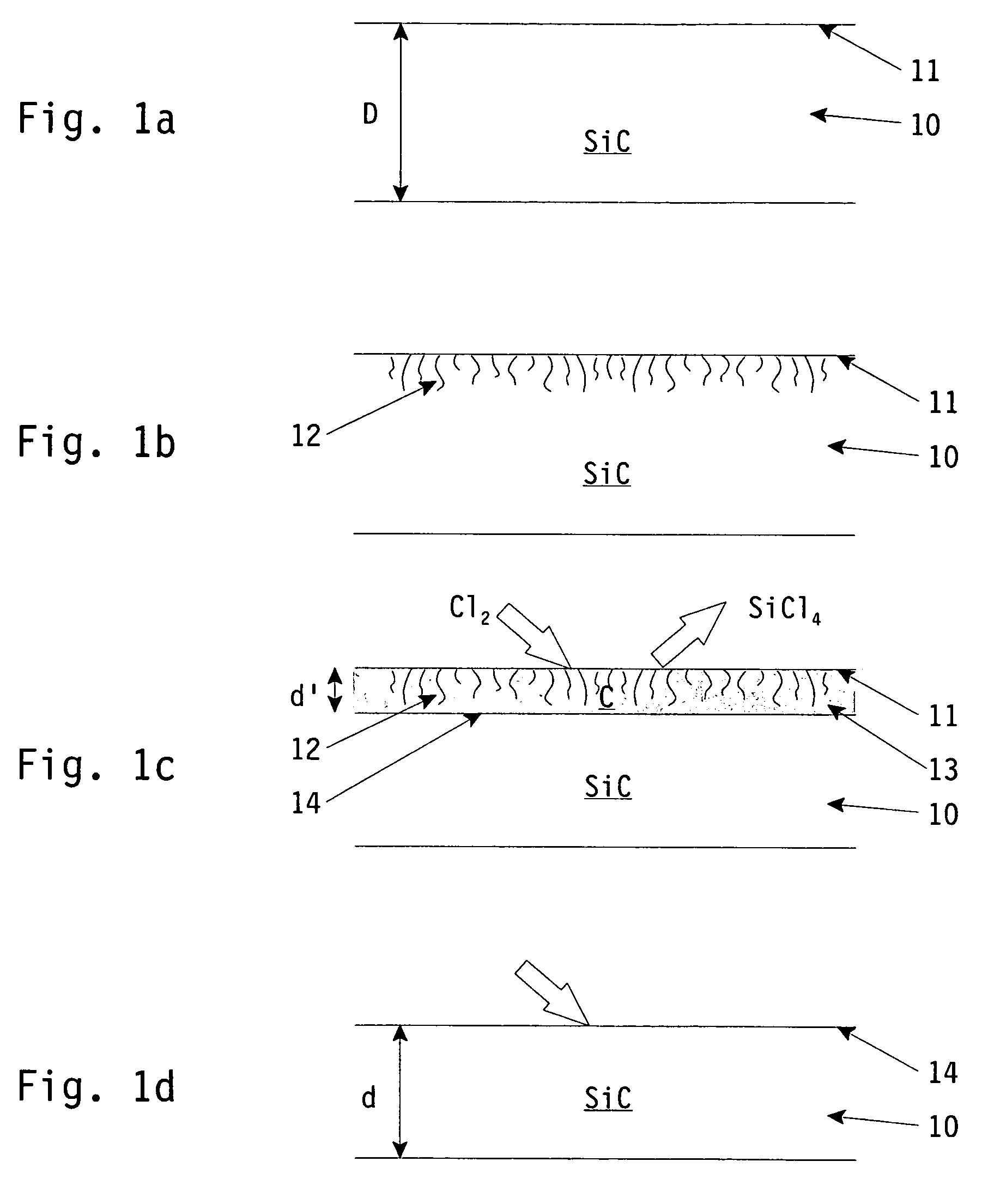Method for the treatment of a surface of a metal-carbide substrate for use in semiconductor manufacturing processes as well as such a metal-carbide substrate
a metal-carbide substrate and processing method technology, applied in the direction of semiconductor/solid-state device manufacturing, basic electric elements, electric apparatus, etc., can solve the problems of reducing the quality or rejection of products, contaminating the semiconductor layer deposition on the wafer, and small, almost invisible microcracks or holes on the surface of the sic substrate, etc., to achieve a higher degree of purity, high purity, and high degree of accuracy
- Summary
- Abstract
- Description
- Claims
- Application Information
AI Technical Summary
Benefits of technology
Problems solved by technology
Method used
Image
Examples
Embodiment Construction
[0025]In FIG. 1a, a silicon carbide (SiC) substrate 10 is disclosed with thickness D, which substrate 10 is frequently used in semiconductor manufacturing processes. Silicon carbide is used as starting material from which, for example, wafer boats or support rings are constructed. Such constructions serve as a holder and positioning means for multiple wafers, which wafers are subjected to several treatment steps during semiconductor fabrication. Such treatment process steps are performed under specific, well controlled conditions as regards to temperature, pressure and vacuum, and can be the deposition of several semiconductor material layers on said wafers, for example, using chemical vapor deposition techniques (CVD) or other process steps, such as temperature annealing.
[0026]As already described in the introductory part of the patent application, such SiC substrates are often subjected to a surface treatment, wherein the surface 11 is subjected by a mechanical machining operation...
PUM
| Property | Measurement | Unit |
|---|---|---|
| pressure | aaaaa | aaaaa |
| temperature | aaaaa | aaaaa |
| temperature | aaaaa | aaaaa |
Abstract
Description
Claims
Application Information
 Login to View More
Login to View More - R&D
- Intellectual Property
- Life Sciences
- Materials
- Tech Scout
- Unparalleled Data Quality
- Higher Quality Content
- 60% Fewer Hallucinations
Browse by: Latest US Patents, China's latest patents, Technical Efficacy Thesaurus, Application Domain, Technology Topic, Popular Technical Reports.
© 2025 PatSnap. All rights reserved.Legal|Privacy policy|Modern Slavery Act Transparency Statement|Sitemap|About US| Contact US: help@patsnap.com


